A very wet day, but I set off to check the hotel and Ueno Park to which we will return – if all goes well. The hotel staff were wearing masks as news of the corona virus broke. Ueno Station is also where were to catch the train to Narita. We had no intention of taking the subway with all the bags – too many steps, so we will get a taxi. I wasted time to find the right station as I thought it was from Ueno.400m away, up and down steps of course.
I walked from Okachimachi station through more stalls along the rail line, past Kesie Ueno below Ueno Park. Rain fell intermittently as I entered Ueno Station – only to realise that Keisei was actually the correct station. It’s the ideal place for our return – the hotel is only metres away. I checked out the entry to the Narita train, the taxi drop-off, and returned to the park above. The park is quite large, containing many buildings, as well as many trees which will have a good display of blossom especially along a broad avenue.
The park grounds were originally part of Kaneiji Temple, which used to be one of the city’s largest and wealthiest temples and a family temple of the ruling Tokugawa clan during the Edo Period. Kaneiji stood in the northeast of the capital to protect the city from evil, much like Enryakuji Temple in Kyoto.
During the Boshin Civil War, which followed the Meiji Restoration in 1868, Kaneiji suffered nearly complete destruction in a battle between the victorious forces of the new Meiji government and loyalists of the overthrown shogunate. After the battle, the temple grounds were converted into one of Japan’s first Western style parks and opened to the public in 1873. A statue of Saigo Takamori, one of the generals in the Battle of Ueno, stands near the park’s southern entrance.
At the southwestern end of the park lies Shinobazu Pond, one of many reminders of Kaneiji Temple’s former grandeur. The pond represents Lake Biwako (in a reference to Kaneiji’s model, the Enryakuji Temple of Kyoto, which overlooks Lake Biwako).
Today Ueno Park is famous for the many museums found on its grounds, especially the Tokyo National Museum, the National Museum for Western Art, the Tokyo Metropolitan Art Museum and the National Science Museum. It is also home to Ueno Zoo, Japan’s first zoological garden, and several temples eg Kiyomizu Kannondo, Bentendo, and Toshogu Shrine.
Kiyomizu Kannondo was originally built in 1631 as part of Kaneiji Temple. It’s home to an image of Kosodate Kannon, the goddess of conception, and is particularly popular among women hoping to have children. .
Bentendo is an octagonal temple hall on an island in Shinobazu Pond at the southern end of the park. The temple is dedicated to Benten, the goddess of good fortune, wealth, music and knowledge..
I walked north out the park along narrow streets like the Rue des Arts where the homes/shops are decorated in a French style, past another temple, to the Yanaka cemetery which may also provide a good cherry display. One tree in the cemetery is already in flower.
And finally I reached my objective, a picturesque narrow street of old shops in the Yanaka Ginza down the Yuyake Danan steps. But the freezing rain was falling heavily making photography difficult so I located the nearest station back, Sendagi. It was a good day but the old camera is now not working.
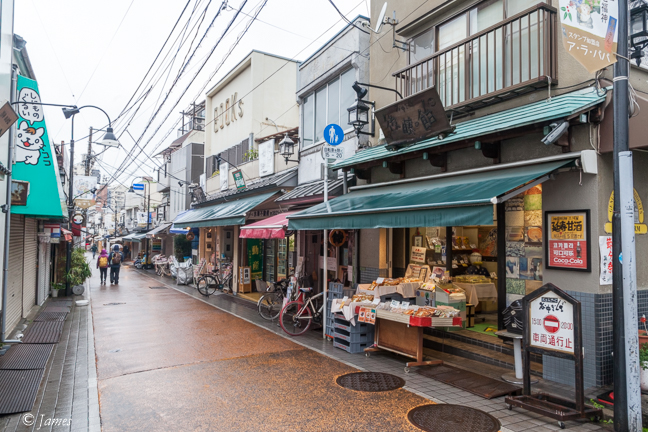
Ueno Market 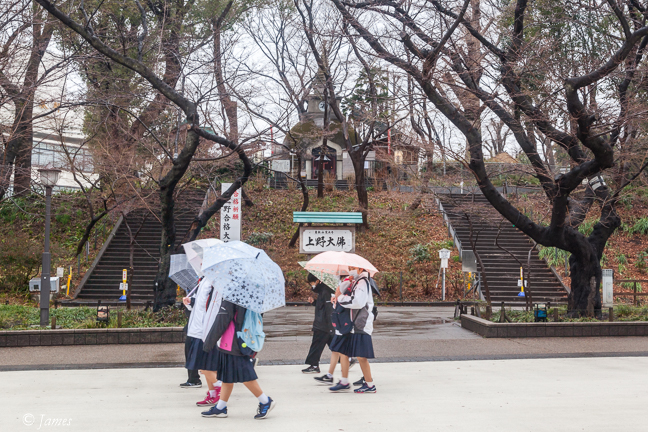
Ueno Park 
Ueno Park 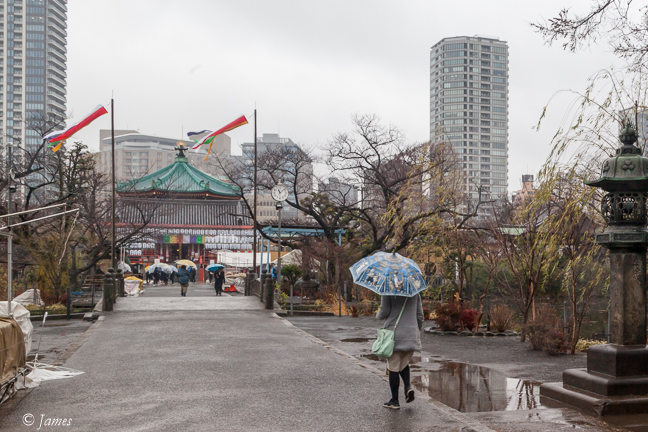
Bentendo 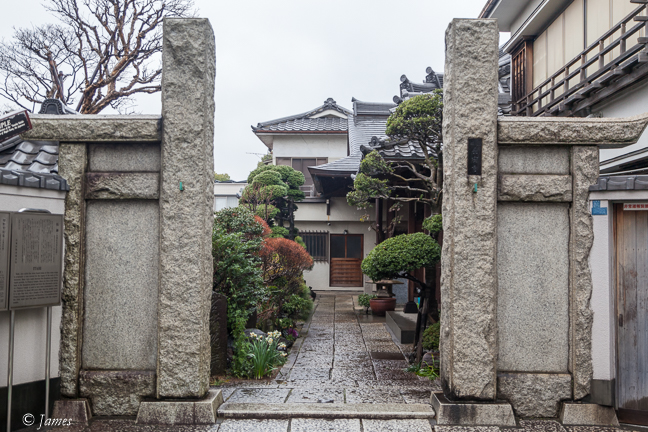
Temple Entrance 
Yanaka Ginza 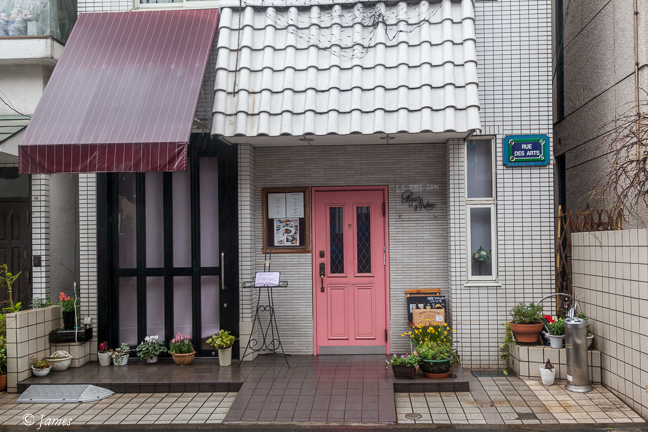
Rue des Arts 
Rue des Arts 

Yanaka Ginza 
Yanaka Ginza 
Station Sign 
Ueno Park
